Xingcheng Yao
Embodied Web Agents: Bridging Physical-Digital Realms for Integrated Agent Intelligence
Jun 18, 2025Abstract:AI agents today are mostly siloed - they either retrieve and reason over vast amount of digital information and knowledge obtained online; or interact with the physical world through embodied perception, planning and action - but rarely both. This separation limits their ability to solve tasks that require integrated physical and digital intelligence, such as cooking from online recipes, navigating with dynamic map data, or interpreting real-world landmarks using web knowledge. We introduce Embodied Web Agents, a novel paradigm for AI agents that fluidly bridge embodiment and web-scale reasoning. To operationalize this concept, we first develop the Embodied Web Agents task environments, a unified simulation platform that tightly integrates realistic 3D indoor and outdoor environments with functional web interfaces. Building upon this platform, we construct and release the Embodied Web Agents Benchmark, which encompasses a diverse suite of tasks including cooking, navigation, shopping, tourism, and geolocation - all requiring coordinated reasoning across physical and digital realms for systematic assessment of cross-domain intelligence. Experimental results reveal significant performance gaps between state-of-the-art AI systems and human capabilities, establishing both challenges and opportunities at the intersection of embodied cognition and web-scale knowledge access. All datasets, codes and websites are publicly available at our project page https://embodied-web-agent.github.io/.
3DLLM-Mem: Long-Term Spatial-Temporal Memory for Embodied 3D Large Language Model
May 28, 2025Abstract:Humans excel at performing complex tasks by leveraging long-term memory across temporal and spatial experiences. In contrast, current Large Language Models (LLMs) struggle to effectively plan and act in dynamic, multi-room 3D environments. We posit that part of this limitation is due to the lack of proper 3D spatial-temporal memory modeling in LLMs. To address this, we first introduce 3DMem-Bench, a comprehensive benchmark comprising over 26,000 trajectories and 2,892 embodied tasks, question-answering and captioning, designed to evaluate an agent's ability to reason over long-term memory in 3D environments. Second, we propose 3DLLM-Mem, a novel dynamic memory management and fusion model for embodied spatial-temporal reasoning and actions in LLMs. Our model uses working memory tokens, which represents current observations, as queries to selectively attend to and fuse the most useful spatial and temporal features from episodic memory, which stores past observations and interactions. Our approach allows the agent to focus on task-relevant information while maintaining memory efficiency in complex, long-horizon environments. Experimental results demonstrate that 3DLLM-Mem achieves state-of-the-art performance across various tasks, outperforming the strongest baselines by 16.5% in success rate on 3DMem-Bench's most challenging in-the-wild embodied tasks.
Kimi-VL Technical Report
Apr 10, 2025Abstract:We present Kimi-VL, an efficient open-source Mixture-of-Experts (MoE) vision-language model (VLM) that offers advanced multimodal reasoning, long-context understanding, and strong agent capabilities - all while activating only 2.8B parameters in its language decoder (Kimi-VL-A3B). Kimi-VL demonstrates strong performance across challenging domains: as a general-purpose VLM, Kimi-VL excels in multi-turn agent tasks (e.g., OSWorld), matching flagship models. Furthermore, it exhibits remarkable capabilities across diverse challenging vision language tasks, including college-level image and video comprehension, OCR, mathematical reasoning, and multi-image understanding. In comparative evaluations, it effectively competes with cutting-edge efficient VLMs such as GPT-4o-mini, Qwen2.5-VL-7B, and Gemma-3-12B-IT, while surpassing GPT-4o in several key domains. Kimi-VL also advances in processing long contexts and perceiving clearly. With a 128K extended context window, Kimi-VL can process diverse long inputs, achieving impressive scores of 64.5 on LongVideoBench and 35.1 on MMLongBench-Doc. Its native-resolution vision encoder, MoonViT, further allows it to see and understand ultra-high-resolution visual inputs, achieving 83.2 on InfoVQA and 34.5 on ScreenSpot-Pro, while maintaining lower computational cost for common tasks. Building upon Kimi-VL, we introduce an advanced long-thinking variant: Kimi-VL-Thinking. Developed through long chain-of-thought (CoT) supervised fine-tuning (SFT) and reinforcement learning (RL), this model exhibits strong long-horizon reasoning capabilities. It achieves scores of 61.7 on MMMU, 36.8 on MathVision, and 71.3 on MathVista while maintaining the compact 2.8B activated LLM parameters, setting a new standard for efficient multimodal thinking models. Code and models are publicly accessible at https://github.com/MoonshotAI/Kimi-VL.
Muon is Scalable for LLM Training
Feb 24, 2025Abstract:Recently, the Muon optimizer based on matrix orthogonalization has demonstrated strong results in training small-scale language models, but the scalability to larger models has not been proven. We identify two crucial techniques for scaling up Muon: (1) adding weight decay and (2) carefully adjusting the per-parameter update scale. These techniques allow Muon to work out-of-the-box on large-scale training without the need of hyper-parameter tuning. Scaling law experiments indicate that Muon achieves $\sim\!2\times$ computational efficiency compared to AdamW with compute optimal training. Based on these improvements, we introduce Moonlight, a 3B/16B-parameter Mixture-of-Expert (MoE) model trained with 5.7T tokens using Muon. Our model improves the current Pareto frontier, achieving better performance with much fewer training FLOPs compared to prior models. We open-source our distributed Muon implementation that is memory optimal and communication efficient. We also release the pretrained, instruction-tuned, and intermediate checkpoints to support future research.
QLASS: Boosting Language Agent Inference via Q-Guided Stepwise Search
Feb 04, 2025Abstract:Language agents have become a promising solution to complex interactive tasks. One of the key ingredients to the success of language agents is the reward model on the trajectory of the agentic workflow, which provides valuable guidance during training or inference. However, due to the lack of annotations of intermediate interactions, most existing works use an outcome reward model to optimize policies across entire trajectories. This may lead to sub-optimal policies and hinder the overall performance. To address this, we propose QLASS (Q-guided Language Agent Stepwise Search), to automatically generate annotations by estimating Q-values in a stepwise manner for open language agents. By introducing a reasoning tree and performing process reward modeling, QLASS provides effective intermediate guidance for each step. With the stepwise guidance, we propose a Q-guided generation strategy to enable language agents to better adapt to long-term value, resulting in significant performance improvement during model inference on complex interactive agent tasks. Notably, even with almost half the annotated data, QLASS retains strong performance, demonstrating its efficiency in handling limited supervision. We also empirically demonstrate that QLASS can lead to more effective decision making through qualitative analysis. We will release our code and data.
Automatic Truss Design with Reinforcement Learning
Jun 27, 2023Abstract:Truss layout design, namely finding a lightweight truss layout satisfying all the physical constraints, is a fundamental problem in the building industry. Generating the optimal layout is a challenging combinatorial optimization problem, which can be extremely expensive to solve by exhaustive search. Directly applying end-to-end reinforcement learning (RL) methods to truss layout design is infeasible either, since only a tiny portion of the entire layout space is valid under the physical constraints, leading to particularly sparse rewards for RL training. In this paper, we develop AutoTruss, a two-stage framework to efficiently generate both lightweight and valid truss layouts. AutoTruss first adopts Monte Carlo tree search to discover a diverse collection of valid layouts. Then RL is applied to iteratively refine the valid solutions. We conduct experiments and ablation studies in popular truss layout design test cases in both 2D and 3D settings. AutoTruss outperforms the best-reported layouts by 25.1% in the most challenging 3D test cases, resulting in the first effective deep-RL-based approach in the truss layout design literature.
NLP From Scratch Without Large-Scale Pretraining: A Simple and Efficient Framework
Nov 07, 2021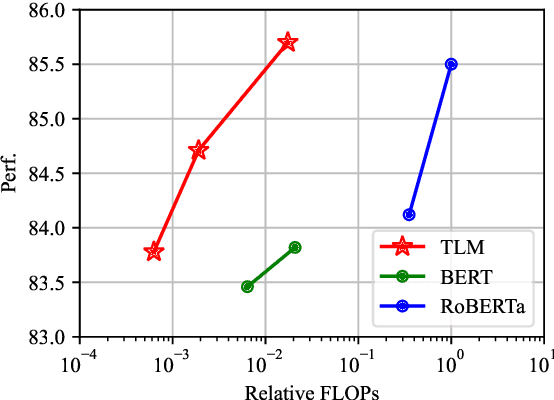
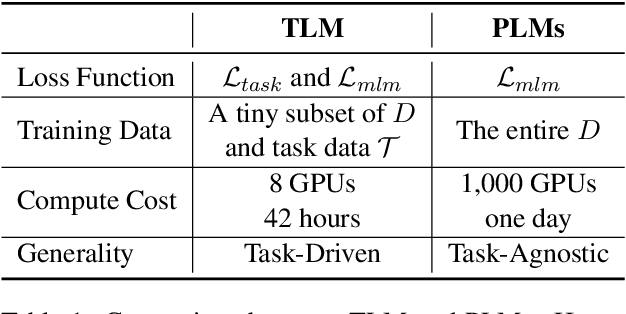

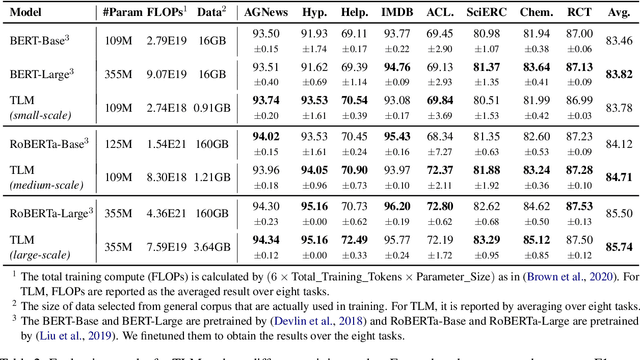
Abstract:Pretrained language models have become the standard approach for many NLP tasks due to strong performance, but they are very expensive to train. We propose a simple and efficient learning framework, TLM, that does not rely on large-scale pretraining. Given some labeled task data and a large general corpus, TLM uses task data as queries to retrieve a tiny subset of the general corpus and jointly optimizes the task objective and the language modeling objective from scratch. On eight classification datasets in four domains, TLM achieves results better than or similar to pretrained language models (e.g., RoBERTa-Large) while reducing the training FLOPs by two orders of magnitude. With high accuracy and efficiency, we hope TLM will contribute to democratizing NLP and expediting its development.
SimCSE: Simple Contrastive Learning of Sentence Embeddings
Apr 18, 2021



Abstract:This paper presents SimCSE, a simple contrastive learning framework that greatly advances the state-of-the-art sentence embeddings. We first describe an unsupervised approach, which takes an input sentence and predicts itself in a contrastive objective, with only standard dropout used as noise. This simple method works surprisingly well, performing on par with previous supervised counterparts. We hypothesize that dropout acts as minimal data augmentation and removing it leads to a representation collapse. Then, we draw inspiration from the recent success of learning sentence embeddings from natural language inference (NLI) datasets and incorporate annotated pairs from NLI datasets into contrastive learning by using "entailment" pairs as positives and "contradiction" pairs as hard negatives. We evaluate SimCSE on standard semantic textual similarity (STS) tasks, and our unsupervised and supervised models using BERT-base achieve an average of 74.5% and 81.6% Spearman's correlation respectively, a 7.9 and 4.6 points improvement compared to previous best results. We also show that contrastive learning theoretically regularizes pre-trained embeddings' anisotropic space to be more uniform, and it better aligns positive pairs when supervised signals are available.
CogDL: An Extensive Toolkit for Deep Learning on Graphs
Mar 01, 2021
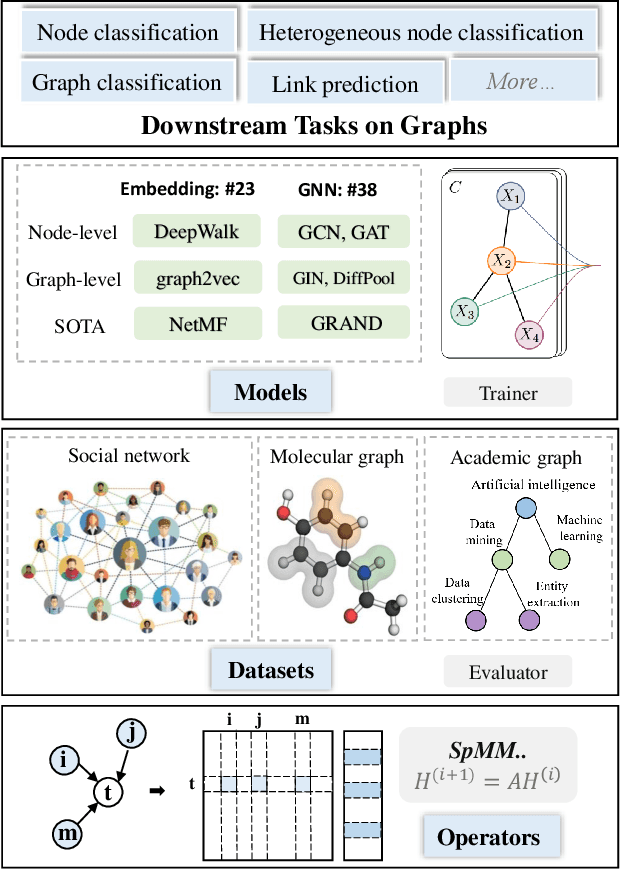
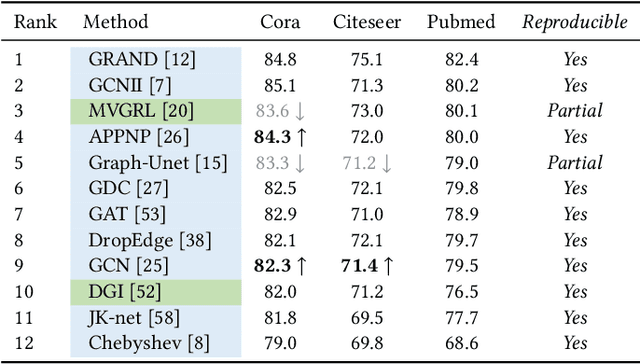
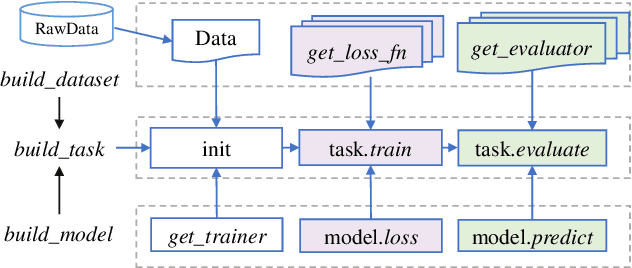
Abstract:Graph representation learning aims to learn low-dimensional node embeddings for graphs. It is used in several real-world applications such as social network analysis and large-scale recommender systems. In this paper, we introduce CogDL, an extensive research toolkit for deep learning on graphs that allows researchers and developers to easily conduct experiments and build applications. It provides standard training and evaluation for the most important tasks in the graph domain, including node classification, link prediction, graph classification, and other graph tasks. For each task, it offers implementations of state-of-the-art models. The models in our toolkit are divided into two major parts, graph embedding methods and graph neural networks. Most of the graph embedding methods learn node-level or graph-level representations in an unsupervised way and preserves the graph properties such as structural information, while graph neural networks capture node features and work in semi-supervised or self-supervised settings. All models implemented in our toolkit can be easily reproducible for leaderboard results. Most models in CogDL are developed on top of PyTorch, and users can leverage the advantages of PyTorch to implement their own models. Furthermore, we demonstrate the effectiveness of CogDL for real-world applications in AMiner, which is a large academic database and system.
A Semi-Supervised Framework for Automatic Pixel-Wise Breast Cancer Grading of Histological Images
Jul 03, 2019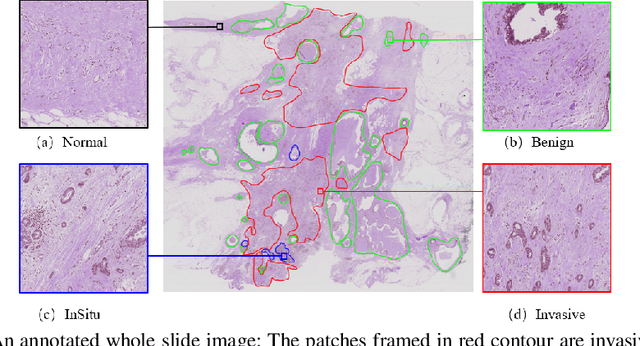
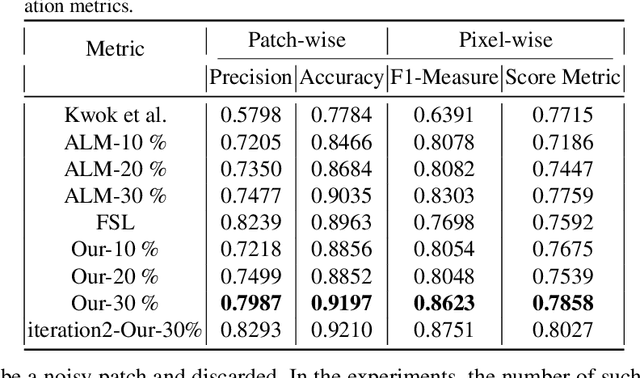
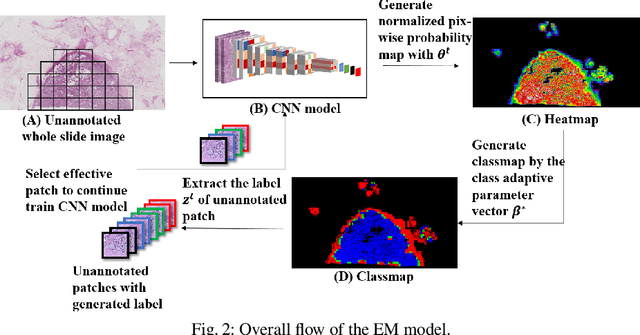

Abstract:Throughout the world, breast cancer is one of the leading causes of female death. Recently, deep learning methods are developed to automatically grade breast cancer of histological slides. However, the performance of existing deep learning models is limited due to the lack of large annotated biomedical datasets. One promising way to relieve the annotating burden is to leverage the unannotated datasets to enhance the trained model. In this paper, we first apply active learning method in breast cancer grading, and propose a semi-supervised framework based on expectation maximization (EM) model. The proposed EM approach is based on the collaborative filtering among the annotated and unannotated datasets. The collaborative filtering method effectively extracts useful and credible datasets from the unannotated images. Results of pixel-wise prediction of whole-slide images (WSI) demonstrate that the proposed method not only outperforms state-of-art methods, but also significantly reduces the annotation cost by over 70%.
 Add to Chrome
Add to Chrome Add to Firefox
Add to Firefox Add to Edge
Add to Edge